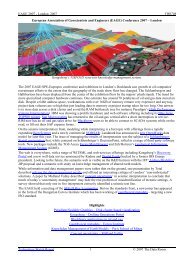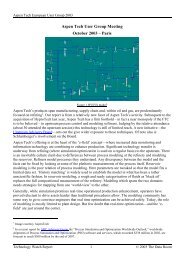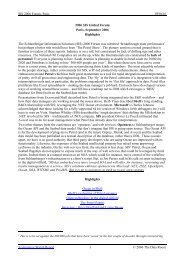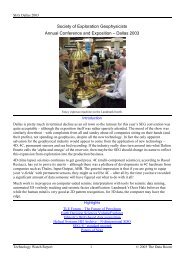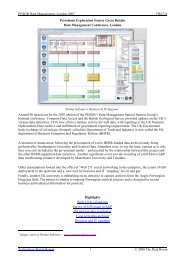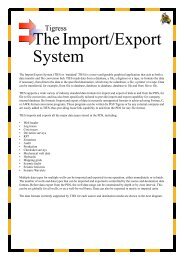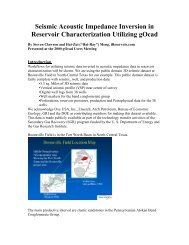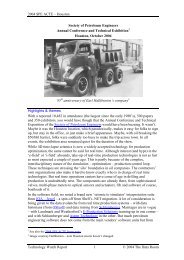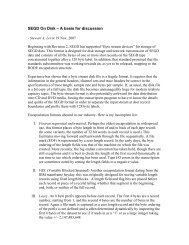Shahab D. Mohaghegh, Ph.D. Intelligent Solutions, Inc. & West
Shahab D. Mohaghegh, Ph.D. Intelligent Solutions, Inc. & West
Shahab D. Mohaghegh, Ph.D. Intelligent Solutions, Inc. & West
Create successful ePaper yourself
Turn your PDF publications into a flip-book with our unique Google optimized e-Paper software.
<strong>Shahab</strong> D. <strong>Mohaghegh</strong>, <strong>Ph</strong>.D.<br />
<strong>Intelligent</strong> <strong>Solutions</strong>, <strong>Inc</strong>. & <strong>West</strong> Virginia University<br />
modeling process and validation, SRM can accurately replicate the results generated by highly<br />
sophisticated reservoir simulation models in response to changes made to the model input, in fractions<br />
of a second. The fact that thousands of SRM runs can be performed in seconds makes uncertainty<br />
analysis a practical task. This allows the uncertainty band associated with any decisions to be identified<br />
quickly. It takes only a handful of simulation runs to generate the required data to develop a SRM.<br />
SRM has been successfully field‐tested and peer‐reviewed. In a recent study performed on a giant oil<br />
field in the Middle East, a SRM was developed to replicate the existing simulation model of the field that<br />
was developed using a commercial simulator. Consisting of approximately a million grid blocks, the<br />
computing time required for a single run of the existing simulation model is 10 hours on a cluster of 12<br />
parallel CPUs. Upon development, calibration and validation of the SRM that could successfully and<br />
accurately replicate the results of the simulation model, tens of millions of SRM runs were performed in<br />
order to comprehensively explore the reservoir model’s solution space so a successful field<br />
development strategy could be developed. The objective was to increase oil production from the field<br />
by relaxing the rate restriction that was imposed on wells. The key was to identify those wells that<br />
would not suffer from high water cuts once a rate relaxation program was put into place. The SRM had<br />
to take into account and quantify the uncertainties associated with the geological model while<br />
accomplishing the objectives of this project.<br />
Figure 1. Results of lifting rate restriction on typical wells from clusters 1 and 5.<br />
Upon completion of tens of millions of SRM runs (equivalent to tens of millions of simulation runs) the<br />
165 wells in the field were divided into 5 clusters, based on the risk of rising water cuts. It was<br />
recommended that wells in clusters 1 and 2 be subjected to rate relaxation. Furthermore, it was<br />
predicted that these wells would produce small amount of water and large amount of incremental oil in<br />
the next 25 years. On the other hand, more than 100 wells placed in clusters 4 and 5 were identified as<br />
wells that will produce large amounts of water if the rate restrictions were lifted.<br />
Upon completion of the study, rate restriction was lifted from 20 wells. These wells were selected from<br />
among all the clusters to provide a representative spatial distribution of the reservoir and examine the<br />
accuracy of the SRM predictions. After more than two and a half years of production the results were<br />
analyzed. As can clearly be seen from Figure 1 (similar results observed from all other wells in the<br />
corresponding clusters as summarized in Figure 2), wells in clusters 1 and 2 produced large amounts of<br />
incremental oil while the water production declined. The opposite effect was observed in wells that<br />
were classified in clusters 4 and 5, as predicted by the SRM. Figure 2 shows the maximum incremental<br />
water cut normalized for all wells in each of the clusters. It is clear from this figure that in accordance<br />
Reservoir Engineering with AI&DM<br />
www.OilIT.com<br />
2




